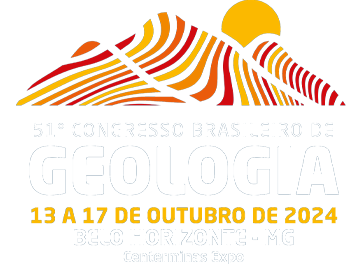Dados da Submissão
Título
A GEOBIA approach for land cover and land use change analysis in open-cast mines in moist tropical region
Texto do resumo
An increasing demand for accurate and timely information on the nature and extent of open‐cast mines highlights the importance of remote sensing dataset, which can provide tools to monitor landscape changes during the last 30 years. Remote sensing has a higher temporal frequency, lower costs and covers large areas in comparison to ground‐based investigations. Thus, remote sensing may play a fundamental role in the environmental monitoring of mining areas given that geographic information systems, satellite images and digital classification systems are available for the automated detection of land cover and land use changes (LCLUC).
Here, we present a systematic geographic object‐based image analysis (GEOBIA) approach to analize LCLUC from high spatial-resolution satellite images and airborne LiDAR data to monitor the amount of revegetated area and quantify the land use changes in open‐cast mines in the Carajás region in the eastern Amazon, Brazil.
High‐resolution satellite images from 2003 to 2022 from different sensors (e.g. GeoEye, WorldView‐3, IKONOS and LiDAR,) were submitted to: i) atmospheric corrections and orthorectification, ii) elaboration of remote sensing indices - normalized difference vegetation index (NDVI) and normalized difference water index (NDWI), and iii) light detection and range sensor (LiDAR) data processing. In relation to GEOBIA, images were evaluated from: iv) image segmentation, v) multilayer calibration, and vi) hierarchical classification. After classification process, we carried out a vii) “from-to” change detection of land cover and open‐cast mine. Later, all images were submitted to viii) classification accuracy assessment per class, and ix) area estimation of the land change map. During the process of GEOBIA classification, we recognized three land-cover (i.e., forests, montane savannas and water bodies) and two land-use classes (i.e., revegetation and mine). Threshold values were established to discriminate land cover and land use classes using spectral bands, the normalized difference vegetation index (NDVI), normalized difference water index (NDWI) and LiDAR digital terrain model and slope map.
The overall accuracies of all the classified images are higher than 94%, while the kappa indexes are higher than 0.91, and the allocation disagreement (AD) and quantify disagreement (QD) are lower than 3.5 and 2.0, respectively. The user accuracy varied between 63% (from revegetation to mine) and 99% (unchanged mine), resulting in a slight underestimation of the area changed from revegetation to mine and an overestimation of the unchanged revegetation area. The finding indicates a clear tendency of a decrease in canga area. Throughout the period of change, we observed that the mine area expanded, which led to the conversion of canga and forest vegetation to mine land. The revegetation of the mining area increased over time, while its reuse by mining decreased.
We conclude that our approach can provide consistent information regarding land cover changes in mines, with a special focus on the dynamic of mining areas with emphasis to revegetation necessary to fulfill environmental liabilities.
Palavras Chave
Carajás National Forest; mine land revegetation; satellite images; environmental assessment
Área
TEMA 16 - Geoquantificação e Geotecnologias
Autores/Proponentes
Pedro Walfir M Souza-Filho, Wilson R. Nascimento Junior, Diogo C Santos, João Paulo N. Lopes, Silvio J Ramos, Paula G Ribeiro, Markus Gastauer
